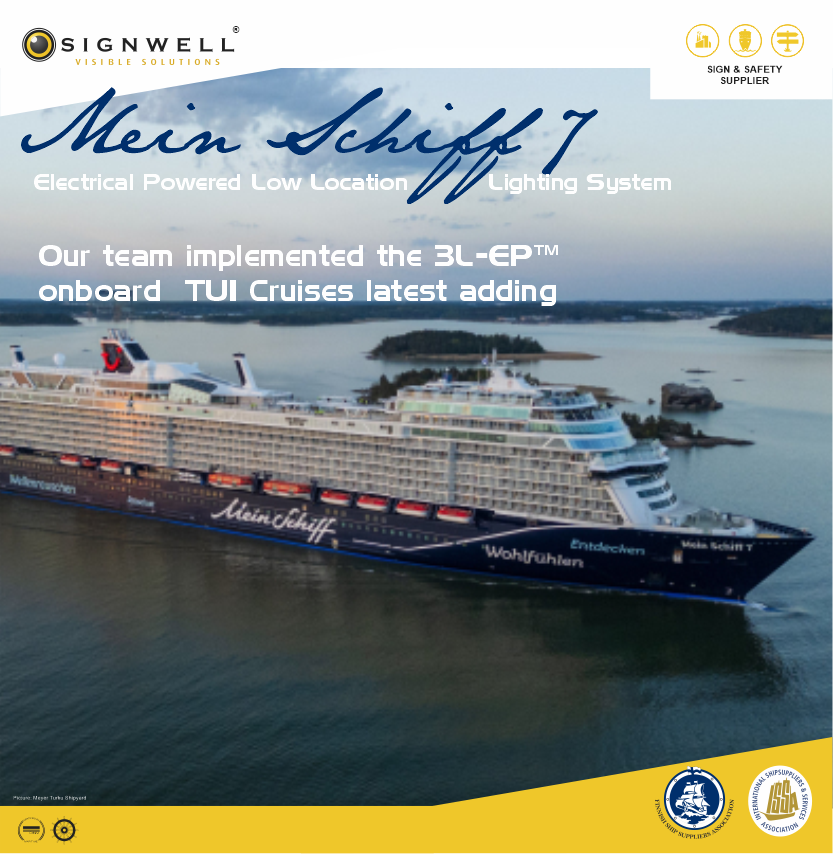
Signwell implements the 3L-EP™, EP LLL onboard Mein Schiff 7
Mein Schiff 7 Signwell has been contracted by Meyer Turku to implement the EP Low Location Lighting System on the latest adding to TUI Cruises, Mein Schiff 7. The…
Read more
A story about implementing escape route signage on cruise ships or ferries will sound like a technical job to many. A large amount of exit signs, stickers and strips, self-adhesive or attached with screws, but not something that requires a lot of thinking. We still see it every day on cruise ships and ferries: the lack of signage or, on the contrary, a jumble of exit signs and stickers that all scream for attention, sometimes with conflicting messages, where a sense of safety is hard to find.
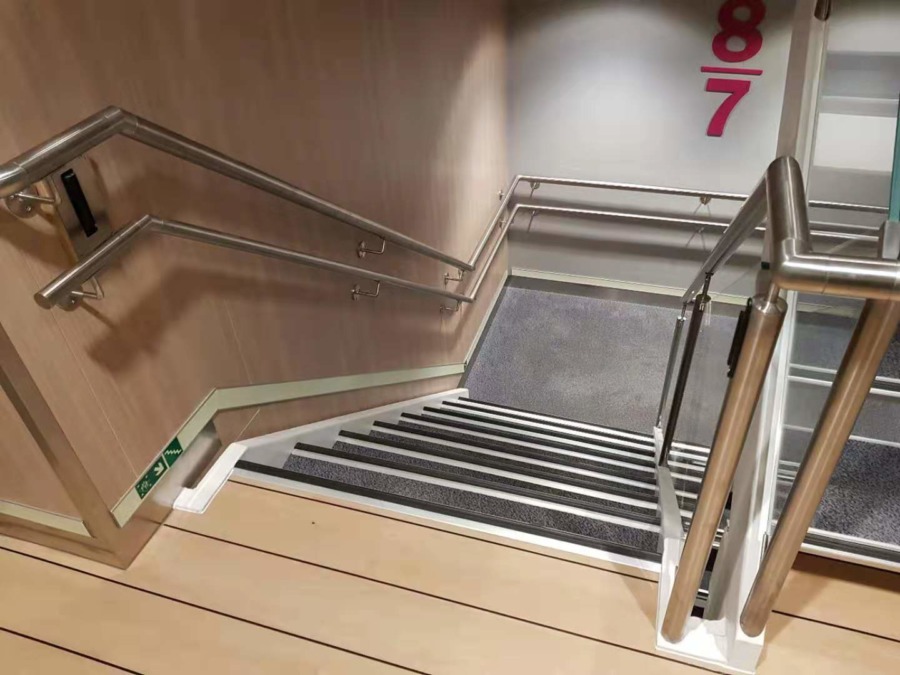
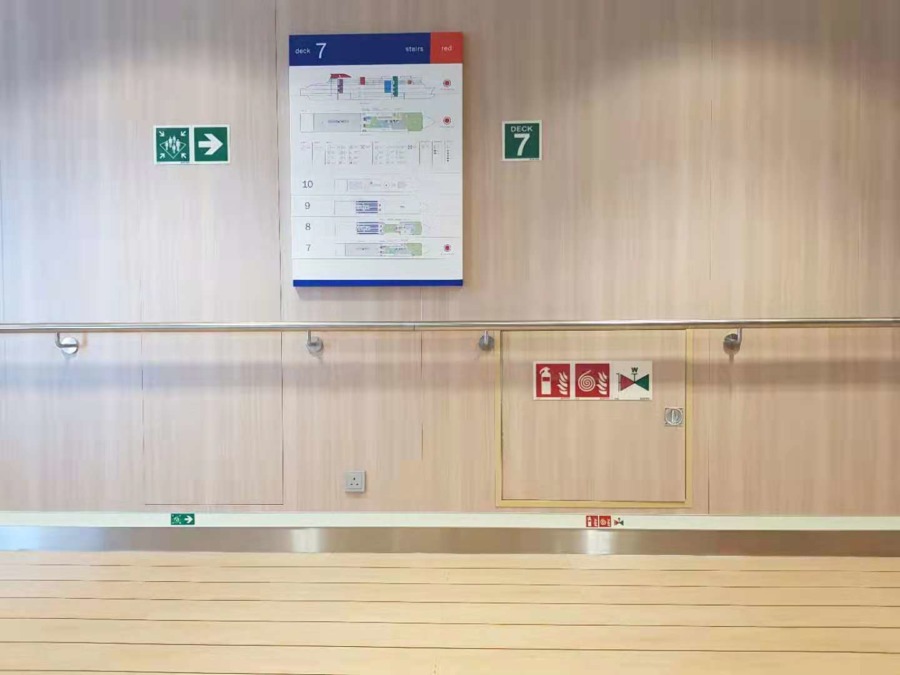
When the subject is ‘safety signage’ onboard a cruise ship, for many that equals ‘Exit Signs’, without any distinction between primary and alternative escape routes as defined in the ship’s mandatory escape plan. The specialism in the field of escape route signage however, is not to hang (or omit) as many exit signs as possible. Attention should be paid to the connection between the Escape Plan and the signage guiding people to the assembly stations: those are the locations where passengers must be accommodated, where the life jackets are and where controlled embarkation can be organized systematically if necessary. A single exit sign on board a ship is meaningless, because as a passenger, where do you have to go? The answer is simple: the destination should always be the assembly station.
An effective escape route signage system consists of a coherent whole of:
When designing this system we always aim to increase the effectiveness of the evacuation process. Cruise ships are complex architectural environments. Are guests and staff aware of the layout of the ship, do they know where the lifeboats are located? For these reasons, an effective escape route signage system is not complete without clear instructions and training; for guests and staff.
In accordance with ISO, as defined in the 24409-2 required by IMO Resolution 1116(30), a safety sign must always consist of a symbol. An escape route sign is always a symbol with an additional arrow. The text ‘assembly station’, or ‘exit’ may be used additionally, in any language or multiple languages.
An arrow without a symbol is not an escape sign. And loose arrows on LLL are completely wrong (except in dead end corridors) because you never know in advance if the primary escape route to the assembly station is passable. If it is blocked, passengers should be able to take an alternative route, which must be clearly marked, without risk of confusion. All this must be clearly explained in the safety instructions.
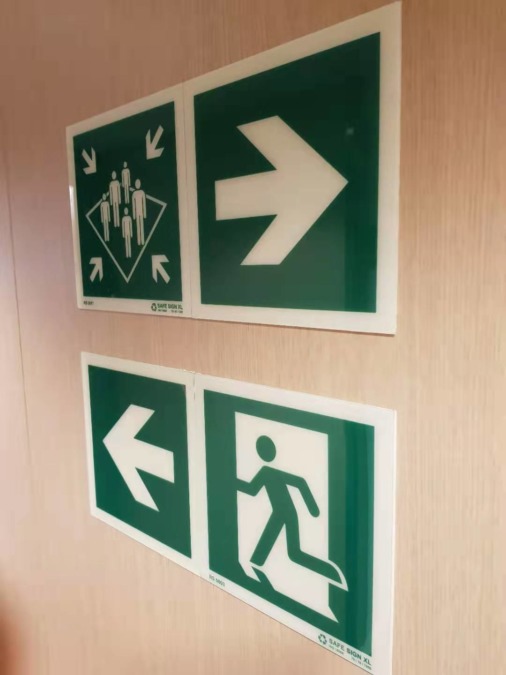
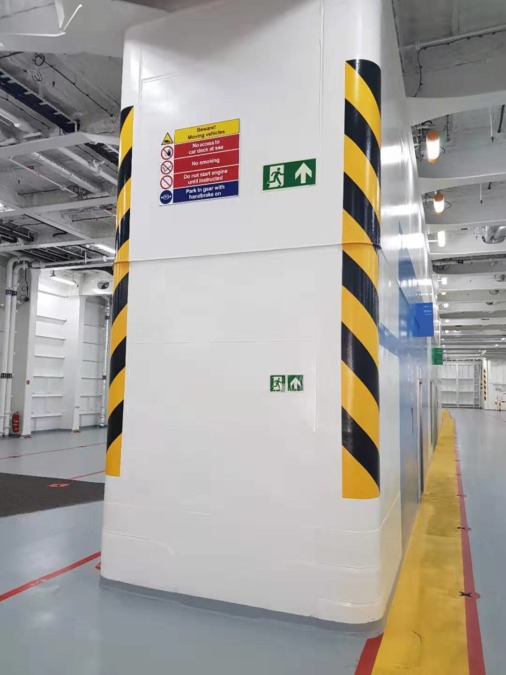
So we conclude that escape route signage is more than just a collection of exit signs and also more than just doing what is urgently needed to meet the requirements of an inspection or classification society.
The correct implementation and assembly of escape route signage is essential to achieve the above situation. When applying safety signs, low location lighting and instructions we think of the right height, position (is the sign visible) and the right fasteners. A correct mounting is therefore just as essential as the design of the system.
For many years, the cruise industry has been using safety signage made of (toxic) PVC, or low-quality plastics. With the environment in mind, we use a new type of PVC free signage, based on PET-X material. PET-X has a longer durability than your average PVC sign and is flame retardant. It is a high quality, environmentally friendly material, that is completely recyclable and has a much longer lifespan than the PVC safety signs currently used. Our SafeSign Pet-X signs have the appearance of the much more expensive polycarbonate and/or acrylic, but at the cost of a regular PVC sign.
We will be happy to show you how our escape route signage can be applied to your ship.
If you would like to have your current escape route signage checked, designed and installed or if you require a Low Location lighting luminance test on your ship(s), please contact us at sales@signwell.fi

Mein Schiff 7 Signwell has been contracted by Meyer Turku to implement the EP Low Location Lighting System on the latest adding to TUI Cruises, Mein Schiff 7. The…
Read more
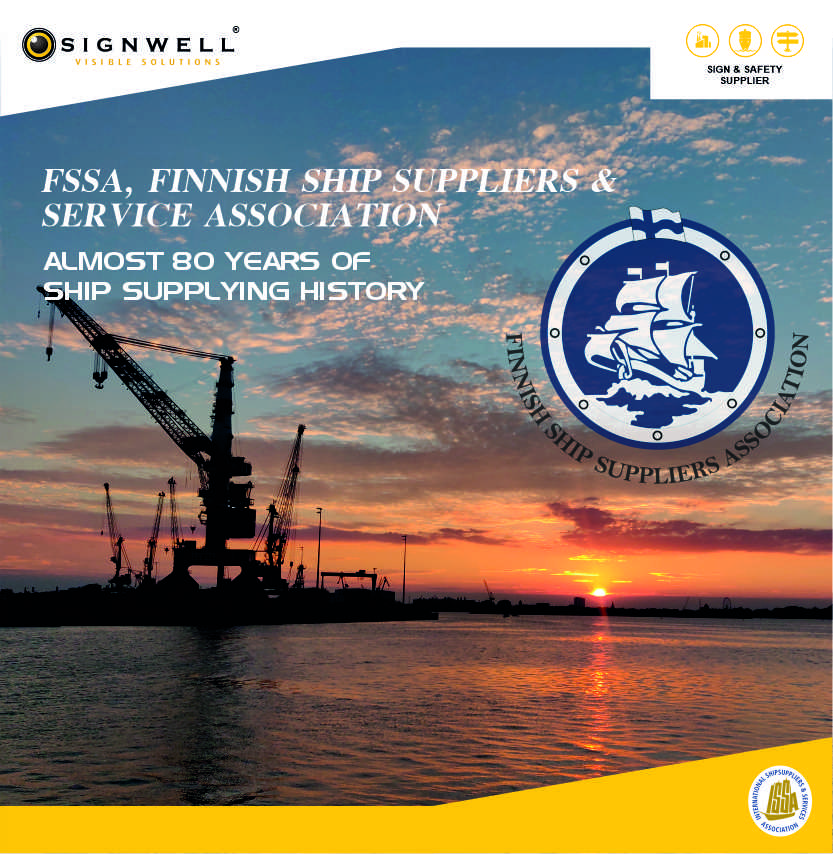
The Finnish Ship Suppliers & Service Association, FSSA has undertaken innumerable actions to defend the interest of the maritime supply sector in Finland, the Baltic Sea and worldwide for almost…
Read more
Signwell has been contracted by Meyer Turku to supply and realize The New Generation of PL Low Location Lighting System on the latest adding to Royal Caribbean Cruise Line (RCCL), ICON…
Read more